6.54am DC
The employee let out a guttural scream as the darts struck his back. Two men lowered his stiffened body to the floor.
A crowd of co-workers howled with laughter and cheered as the account executive, still prostrate, managed to praise the weapon that felled him – a Taser electroshock gun manufactured by his company, Axon Enterprise Inc.
“Oh, that’s good,” the Axon employee, Ross Blank, heaved into a microphone.
Blank later posted a video on his LinkedIn account of the company’s January event, held at a Phoenix resort. “Taking one more for the team is Bad Assery,” long-time executive Steve Tuttle commented on the post. “Love it!”
Axon employee Ross Blank lies face down from his tasing at a company event in January, in a screenshot of a video he posted on LinkedIn.
Axon, a corporation with a market capitalization of $15 billion, has a dominant position in its niche of electroshock weapons and body camera technology for law enforcement. It describes its mission as a noble one: saving lives. Its best-known product is the Taser, the device it developed to temporarily immobilize criminal suspects with darts that deliver electric current, providing police with an alternative to firearms. Axon says that more than 18,000 law enforcement agencies in 107 countries use Tasers.
Less well-known is the all-in corporate culture at Axon, which has tested employees’ commitment and fealty in unusual ways – through measures that some embraced wholeheartedly but others felt were extreme and potentially dangerous.
Shawn Gorman, a lawyer who worked at Axon until 2019, said the company had a high-pressure culture of loyalty, unlike anything he has seen in nearly two decades of practice.
“It was truly toxic,” he said.
The tasing exercise struck several workplace experts consulted by Reuters as an outlandish and unnecessary hazard. It’s “unhealthy at best, dangerous at worst,” said Jennifer Chatman, a professor studying workplace culture at the Haas School of Business at the University of California, Berkeley. “This is on the fringe for sure.”
“We strongly object to any implication that Axon pressures employees to engage in activities against their will,” said Andrea James, the company’s chief communications officer.
“It was truly toxic.”
Shawn Gorman, a lawyer at Axon until 2019, said of Axon’s culture
James defended Axon’s culture, describing it as “a collaborative environment of mission-driven individuals who join forces to deliver an extraordinarily profound impact on society.”
Axon said that staff tasings have never drawn formal complaints and are conducted with “the utmost focus on both psychological and physical safety.” Blank said he never felt pressured by Axon. Tuttle did not respond to requests for comment.
Staff tasings, known as “exposures,” are corporate rituals at Axon. Sometimes they involve mid-career employees like Blank, but often they are used to initiate interns or new recruits into Axon’s all-in culture, according to numerous interviews and videos seen by Reuters. “Tase, Tase, Tase,” staffers chanted in unison in a March 2019 recording as a target stood in the line of fire.
“It looks like a scene from ancient Rome, gladiator-style,” said Valencia Gibson, a former international support manager at Axon. She was one of several former staffers to compare tasings, frequently held in the tiered atrium at Axon’s Scottsdale headquarters, to the Colosseum’s spectacles. Gibson said there was pressure in general for staff to be tased but that she was able to decline due to pregnancy.
Axon directed staff attending a January 2022 conference to a foyer where they could obtain company-branded tattoos, a screenshot of a message to employees shows. Markings and timestamp removed by Reuters for source protection
Besides hosting Taser exposures, company leaders have urged staff to “make things permanent” by getting tattoos of Axon logos on their bodies and to bet part of their pay on a stock plan most advantageous to ensconced, highly placed executives.
Men historically have dominated the upper ranks, with 129 in management and financial roles compared with 46 women, according to 2020 data Axon submitted in a public procurement.
Axon said Isner made no such remark. Isner said in a statement, “The defamatory language attributed to me by a disgruntled former employee is emotionally motivated and a complete fabrication.”
The company has “zero tolerance” for workplace discrimination or harassment and objects to “inflammatory allegations regarding our environment as it relates to women,” James said.
“Axon supports and celebrates a gender-diverse workforce,” she said, adding that 40% of the highest-level executive team is female, and that the company has promoted men and women equally this year.
Executive Josh Isner teased an employee before his first tasing, as shown in this excerpt from a promotional video Axon posted on its website in 2019. “Big tree fall hard,” Isner said before current flowed through the bellowing worker.
Fifteen people, about half of whom oversaw human-resources and legal work for Axon, said they felt company leaders sidelined those who didn’t show sufficient loyalty or commitment to the all-in credo – by, for instance, declining the stock program or failing to be tased. They said they believed those employees received less desirable assignments, were excluded from business meetings, or, in some cases, were forced from their jobs.
The apparent light-heartedness and the zaniness of the tasing exercise – described previously in a 2018 story in The New Yorker about Axon’s role in the police body-camera business – might suggest that staff exposures at most induce temporary pain or discomfort.
Axon has a dominant position in its niche of selling electroshock weapons and body cameras to law enforcement. REUTERS/Hannibal Hanschke
Tasings, however, can be fatal.
More than 1,000 people have died in the United States following incidents in which police used Axon’s Tasers, often along with other types of force, a Reuters examination in 2017 found. No one with whom Reuters spoke was aware of deaths or lawsuits stemming from tasings of Axon staff. Over the years, however, Axon has faced over 120 external lawsuits alleging wrongful death after the weapon’s use, according to Reuters reporting.
Axon keeps legal settlements confidential. But the company said in February in its annual report filed with the U.S. Securities and Exchange Commission that no product claim after 2014 has exceeded its $5 million in self-insurance. Axon has faced fewer lawsuits since 2009, the year it introduced a new Taser model with a lower charge. In the wake of a study showing Taser pulses could interfere with the rhythms of the human heart, the company that year revised its recommendations on where to aim the device. Previously, users were told to aim at the torso; since 2009, Axon has encouraged users to shoot for the back or below the chest.
“I saw people cry real bad.”
Long-time Axon employee who has left the company
Videos of employee tasings seen by Reuters show that darts were aimed at the back and thigh area under highly controlled conditions, in which subjects wore safety glasses and spotters clutched their arms as they fell to a mat. Even so, workers have fainted, cried, bled or suffered other pain, witnesses or former human-resources staff said.
WARNING: GRAPHIC CONTENT – An employee and her mother writhe during a tasing at the company’s Scottsdale headquarters in a promotional video the Taser maker published on its website in 2019.
“I saw people cry real bad,” said one long-time employee who has since left the company.
Ann Rosenthal, a senior advisor to the U.S. Occupational Safety and Health Administration (OSHA) until 2022, said Axon’s tasing of staff could violate a provision of the federal Occupational Safety and Health Act, which mandates that workplaces be free of recognized hazards that are “likely to cause death or serious physical harm.”
An OSHA spokesperson said the administration has no ongoing investigations of Axon, nor any findings from completed investigations. It declined further comment on Axon. The main commission overseeing workplace safety in Arizona, where Axon is based, declined to comment.
The company told Reuters that it objected to any suggestion that its workplace practices “are illegal or dangerous.”
In 2022, Axon published a blog post aimed at “debunking some of the most common myths” about its weapons. There, the company argues that its Tasers are “one of the most studied, safe and effective means of quickly stopping a threat,” causing muscles to flex by employing “the same technology you see in off-the-shelf muscle stimulators used for rehab and muscle therapy.”
Axon itself has issued multiple pages of safety warnings to police about the risks of using the technology. Even in the controlled setting of the Axon workplace, the company requires exposure candidates to sign a waiver, forfeiting their right to sue Axon for any exposure-related injury.
Axon requires employees who participate in tasings to sign a liability waiver that repeatedly cites the risk of death.
The waiver warns of the potential for death at least 12 times, according to a 2019 copy. Repeated electrical stimuli “can induce seizure in some people, which may result in death or serious injury,” the waiver states.
“Certainly this is a hazard, and they’re clearly aware it’s a hazard because they’re warning employees that they could get killed,” said Rosenthal, who until 2018 was the Labor Department’s top lawyer on workplace safety.
She and two other experts said the pressure workers describe is similar to that experienced by initiates of gangs or some fraternities.
“It sounds like a hazing process as much as anything else,” Rosenthal said.
Sigma Chi brothers
While a rising sophomore at Harvard in the 1980s, Rick Smith, the future Axon CEO, attended a fraternity rush week at a friend’s school.
“There was something about being in the company of men, and men alone, that enabled us to speak openly and honestly about what was on our minds,” he wrote years later in an op-ed for the news site Observer.com.
In 1989, Smith wrote, he started a chapter of the Sigma Chi fraternity at Harvard despite the university’s refusal – both then and now – to recognize such single-gender groups on the grounds that they are discriminatory.
The fraternity fostered what Smith described in Boston Magazine as “lasting friendships.” As of February, three of the company’s eight board members, including Smith, were alumni of Harvard’s Sigma Chi chapter. Since then, three with no Sigma Chi association have been added, bringing the board to 11.
Axon President Josh Isner, who is not a board member, also is a former member of the Harvard fraternity.
The company said Smith’s articles had no bearing on Axon.
“My comments on the value of private spaces for men and women to adjust to college life is very separate from how I view diversity in the workplace,” Smith said. “I learn from people who are different from me, who bring different life experiences, and I am proud of our investments to build a diverse team.”
Smith said Isner’s fraternity affiliation was not a factor in Isner’s position at the company and described him as “an instrumental leader at Axon for more than a decade.”
Michael Church, Sigma Chi’s executive director, said that “throughout the years Rick Smith has demonstrated a thorough appreciation for the benefits of a fraternal experience.” He directed further questions to Axon.
From the time Smith co-founded the business with his brother in 1993, he put his body on the line. A recording from that year, posted on the company website, shows Smith standing in an inflatable pool of water and taking a hit from an early Taser. Smith falls down and grunts, with his arms and legs flailing for about 10 seconds.
Screenshots from an Axon promotional video show CEO Rick Smith taking a Taser hit in 1993, the year he co-founded the business.
Around 1998, U.S. Marine Corps veteran Hans Marrero joined the company, helping to attract law enforcement customers. An old video on YouTube, which Axon replayed for police at an event this year, billed Marrero as “one of the toughest men alive” and displayed him handily resisting punches and chokeholds.
He “can take pain,” a description of the video on YouTube reads, “but can he handle a taser?”
After collapsing from the weapon, Marrero says the Taser had a greater effect than a grenade that once hit him: It “knocked me on my ass,” making him “lay there, like a little baby.”
Marine Corps veteran Hans Marrero said the Taser “knocked me on my ass” in a years-old video that Axon showed police during a January presentation in Las Vegas. The screenshot is from a video of the event that Axon posted on YouTube in February.
Marrero toured the United States in a camper van “demonstrating” the Taser, Smith said in a separate promotional video for Axon. The demos around 1999 marked a turning point in sales to police, Smith has said, and set up the company to earn $8.4 million from an initial public offering in 2001.
Asked to comment in a brief phone call, Marrero said, “I’m not interested, buddy.”
Smith, now 53, set a macho tone in the workplace, interviews and records show. For instance, Smith at times mocked male employees by calling them a “pussy,” according to two written exchanges seen by Reuters. In a meeting held in recent years with more than a dozen employees including women, he used the same term to refer to a male staffer who wouldn’t do as he asked, an attendee said.
According to the 2019 presentation by a human resources staffer, Smith stated his concern in a company meeting that diversity and inclusion efforts meant that Axon “won’t know how to ‘have fun.’”
Smith and other executives and staffers took excursions to strip clubs, six former employees said and text messages showed. Some said police joined on occasion, and staff who did not attend said they felt excluded.
In Las Vegas, Smith traveled around with executives in a rented stretched truck known as “The Beast,” according to a photo and caption posted on the limousine company’s social media account in May 2022. The burnt-orange-colored vehicle, examined by a Reuters reporter, has a stripper pole inside it.
Axon CEO Rick Smith and fellow executives arrive via private jet in Las Vegas and travel around in a rented stretched truck known as “The Beast.” The photo was posted by the limo company on its Facebook page in May 2022.
“The Beast” limo has a stripper pole inside and seats that fold up to create luggage space or a dance floor. REUTERS/Jeffrey Dastin
In statements to Reuters, the company drew a distinction between employees’ personal and professional undertakings. “We do not take customers or employees to strip clubs for any company events,” Axon said. “What people choose to do on their own personal time is something we respect their privacy to do. We have firm expectations that nothing inappropriate comes into the workplace either directly or indirectly.”
Both male and female staffers said taking time for family was discouraged or penalized at Axon. Three women and two men said in interviews that Axon forced them out after they sought or took parental leave in recent years. One of them, Valencia Gibson, said she received a layoff notice in 2017 a few months before she had a baby.
“It’s not morally, ethically right,” Gibson said, adding that she did not pursue legal action because she didn’t want to put herself through the stress.
One of the men, however, filed an Equal Employment Opportunity complaint in 2022, seen by Reuters, which he said is pending. Among other things, the person alleged sexism figured in Axon’s decision to terminate him after he filed a family-leave request to bond with his newborn.
In its statements to Reuters, Axon disputed the Equal Employment Opportunity claim, adding that more than 100 employees have benefited from its parental leave policies this year. The Equal Employment Opportunity Commission declined to comment, citing federal law that barred it from releasing information on such complaints.
Axon described its leave policies – up to 20 weeks paid for women and 10 weeks for men – as “family-friendly” and “industry-leading” in a 2021 corporate responsibility report. In contracts including a recent $7 million deal with Los Angeles for police-car cameras, it agreed not to discriminate against any person on the basis of factors such as gender, pregnancy or childbirth.
Smith said he “deeply” embraces diversity at Axon, noting the company wants a balance between “professionalism and personality” while believing “everyone should bring their full selves to work every day and feel welcomed as unique human beings.”
slide 5 to 7 of 3
“You’re a man’s kind of man,” shouted a member of an uproarious crowd at Axon’s Scottsdale offices in a 2018 tasing video of an intern.
Summer 2022 intern Rylan Bennigson posted this video on LinkedIn of his tasing, an exercise he described to Reuters as “100% voluntary” and “a celebration of what we had done in the internship.”
An employee lets out a cry as she’s tased months after her start at Axon. The employee, who posted the video on LinkedIn in 2022, declined to comment.
‘Young and impressionable’
To be tased, in the Axon lexicon, is to “ride the lightning.”
Six former employees including two executives told Reuters that Axon tased staff strategically around new-hire orientations – a contention that Axon called “false.”
In a 2019 workplace survey seen by Reuters, exposures were described as “Intern Cohort Engagement Activities.” An intern’s tasing in 2018 elicited uproarious screams from his peers, a video showed. “You’re a man’s kind of man!” one person shouted.
A screenshot of an Axon workplace survey from 2019 shows the company considered tasings, otherwise known as “exposures,” as one of its “Intern Cohort Engagement Activities.”
“I felt like there definitely was a lot of pressure there,” a different former intern told Reuters, comparing the experience to fraternity rush. “You’re part of the team or the brotherhood if you did it.” He said he could not breathe when he was shot, and he had to leave work early to recover. Every time he heard a Taser discharge “from that point on, I’d kind of jump a little bit in my chair.”
Around 2009, the company began hiring cohorts of around 15 college graduates to join a “leadership development program,” a two-year paid role that gave them a chance at a longer-term job.
A former employee said she understood the focus on initiating young people this way: “One, they’re young and impressionable, and two, start them early.”
“Everybody tells their (tasing) stories,” said the person, who herself took a hit from the darts. “They try to make you think it’s cool.”
“It looks like a scene from ancient Rome, gladiator-style.”
Valencia Gibson, former Axon employee
In an Axon video taken at a January 2022 company conference, a new employee states on camera while awaiting a tasing, “This is day three of the job, so we’ll see how it goes.” The footage shows the staffer, clad in a superhero outfit from the animated film series “The Incredibles,” squinting and smiling as the darts hit her back.
Others took exposures shirtless or in a sports bra, to avoid having their clothes punctured by darts or stained with blood, said workers, including former intern Keara Berlin.
“It just seems like if the goal really is for yourself to experience the product that you’re working on that it should be as safe as possible and private,” not “in a big group of people and taking your shirt off,” said Berlin, now 24. She said the majority of her 2019 cohort was tased in one session lasting at least 45 minutes, although she said she had no interest and told colleagues as an excuse that she was not appropriately dressed.
Some interns and young staffers told Reuters they wanted to be tased to satisfy their curiosity or gain confidence in the product. Some said they appreciated the camaraderie. They also liked the mementos for stepping up to the challenge: commemorative coins adorned with Axon insignia. Similar coins are given to military personnel or police officers for service achievements.
Axon touts its mission of social justice, including on company-branded vans in Scottsdale. REUTERS/Jeffrey Dastin
Rylan Bennigson, an intern last summer, said his tasing was “100% voluntary.” He called it “a personal decision and a celebration of what we had done in the internship.”
Since at least 2005, the company has required exposure volunteers to waive their rights to sue, copies of these forms archived from Axon’s old website show. By 2011, Axon began to warn more prominently in the waivers that the weapons “Can cause death or serious injury,” the forms show.
Axon said the waiver aimed “to truly ensure that our employees know and understand their risks and consider them prior to proceeding.” Employees have no obligation to undergo tasing for career advancement, Axon said, and doing so can be in private if they so choose.
Smith said in the 2018 New Yorker piece that he no longer watched exposures, because, to him, they were like smelling tequila after a hangover. He told Reuters in his statement that tasings are “unpleasant.” But he defended the practice, saying that most of the company’s law enforcement customers require or offer their officers tasing opportunities as a way to develop “deeper understanding of the technology, as well as an empathy for people on the receiving end.”
“We offer this same experience to our employees,” Smith said.
Reuters confirmed that some police agencies, including those in Sacramento and San Jose, California, do offer the option. The Los Angeles Police Department requires a Taser-like experience, with exceptions for those with medical risks. The department attaches wires to officers rather than firing the weapon’s darts into their backs, avoiding treatment costs and risks associated with having an open wound, a captain told Reuters.
In his statement to Reuters, Smith said: “There is zero pressure for anyone to participate (in tasings) and we make significant effort to ensure people understand they are not expected to do it. Most of our board and many of our most senior executives have chosen not to experience Taser devices.”
Axon said employee exposures occurred just a few times a year. They are “part of Axon’s culture because we see the importance in standing behind and in front of our products.”
Loyalty etched in ink
In October 2021, in a tweet, CEO Smith flexed to display an Axon logo and lightning bolts tattooed on his bicep, celebrating stock options he earned.
“Wow,” former chief of staff Mihir Shah commented. “All in!!!”
Shah declined to comment and deleted his tweet during a phone call with Reuters in July.
Smith and other executives in recent years got inked during excursions to Starlight Tattoo at the Mandalay Bay Resort and Casino in Las Vegas, according to Smith’s public statements, employee text messages and three former staffers.
CEO Smith displays the fresh ink on his bicep to mark the Axon stock options he earned. The photos were taken at Starlight Tattoo in Las Vegas and posted on his Twitter account in October 2021.
Starlight’s owner, Mario Barth, said he was traveling and could not immediately comment.
After getting Axon-themed tattoos, some executives prodded their colleagues to follow suit, said four former employees. Three said they personally resisted getting tattoos despite repeated, sometimes discomfiting entreaties from company leaders.
“The execs who got tattoos were considered to be the ones who were all in,” said one of the former employees. “It was like being branded.”
“If you didn’t get it – you were questioned,” the person said.
Axon invited tattoo artists to internal conferences this year and last, company videos show. “Willing to make things permanent?” an internal company message asked employees. The message directed staff to an on-site artist in a foyer in a Scottsdale conference center.
Two of the former employees said women were encouraged to obtain tattoos after company officials expressed concern about only having male employees with Axon ink.
“They kept asking some of the girls to get tattoos,” one said. “I was like, no thanks. It’s going to fuel the boys-club fire.”
Axon said the vast majority of staff had no such ink and disputed that employees felt pressure to receive tattoos. Smith called the assertion “simply ridiculous,” adding, “Tattoos have never come up in hiring discussions nor promotion discussions, and I would come down hard on anyone who tried to make an issue of it.”
Some staffers embraced the offer. One video produced by Axon, posted on its website in November 2022, showed a sales director at a company conference getting a Taser tattoo, a circle with a lightning bolt at the center, on his bicep.
The sales director told Reuters he was inspired by Axon’s goal of cutting officer-involved shootings and signed up with as many as 40 of his peers.
Axon invited tattoo artists to a Phoenix conference it hosted this year to ink corporate insignia on willing employees, as shown in screenshots from a January video the company posted on YouTube.
The tattoo was a “funny, big cultural thing,” said the person, who declined to be named, saying he did not want to be associated with an article critical of Axon. “I do not regret it even a little bit.”
“I am proud of my tattoo,” Axon’s Chief Legal Officer Isaiah Fields said in a statement to Reuters. “It symbolizes the small part I have played in Axon’s mission and the positive impact we have made on the world.”
The stock plan was another measure of employee commitment – and it led to angst and regrets among some senior staff.
Around 2018, following a large stock award to Smith, investors told Axon they wanted to see broader employee buy-in to a stock program instead of “highly concentrated plans among senior management,” the company said in securities filings.
More than 500 U.S. staffers with salaries of at least $100,000 were asked to suspend from 5% to as much as half their pay, according to a 2018 securities filing. In return, over nine years, employees could get up to triple that amount in chunks of stock each time the board certified that Axon had met rigorous financial thresholds.
If Axon did not reach any targets by the time an employee quit or was fired, the staffer would get nothing. Those dismissed without cause would earn no stock or a capped amount.
Axon did not specifically comment on the stock plan for this story, other than to point out that the majority of qualifying employees were capped at committing up to 10% of their earnings.
In a 2019 press release, Axon trumpeted that “more than 300 employees” agreed to allocate $75 million of their compensation to the plan, choosing “to align their pay directly with value creation for shareholders.”
This May, Smith told investors on a Zoom video call that “nearly 100” ultimately became millionaires from the program. He rolled up his sleeve to show a tattoo to mark milestones in the form of filled-in bars.
“I have my financial scorecard proudly on my body,” he said. He said around a dozen other employees got the same tattoo.
The biggest winners by far from the plan, which was reviewed by Reuters, have been top-level executives. Isner alone reaped more than $73 million in vested stock resulting from the targets Axon hit, a securities filing last year shows.
Axon executive Josh Isner, shown in 2017 in center, was among the biggest beneficiaries of a stock program that some former staffers said cost them thousands of dollars in pay they never were able to recoup. REUTERS/Brendan McDermid
Isner did not respond to a request for comment on the plan.
Six former employees told Reuters they had lost between several hundred dollars and tens of thousands of dollars, although one of them was able to recoup the money upon exiting the company.
Wayne Guay, an expert on stock compensation at the Wharton School of the University of Pennsylvania, said the plan was aggressive in its targets and covered an unusually long period – more risky for younger, often highly mobile employees.
“The founder is going to be there til the end for sure, but rank-and-file employees?” said Guay. “I’m just not sure.”
In 2018 messages to an Axon official involved in the stock plan, one young employee expressed misgivings. The official told the staffer to “take a chance” on the plan or risk falling behind “with your pants down.”
A different lower-level executive told Reuters he acceded to what he felt was “immense pressure” to sign up.
“I knew that the people that I reported to would see whether I was committing to be a company man for the next nine years,” said the executive, who has since departed Axon.
Shot 62 times
Axon’s all-in culture wasn’t just aimed at eager interns and ambitious young executives.
In a December 2019 video created by Axon, then-training manager Lamar Cousins claimed that he had been tased around 62 times. Cousins did not respond to emails requesting comment.
A message sent to employees announcing a staff tasing event. Markings and timestamp removed by Reuters for source protection
A company-wide announcement summoned employees to a ballroom during an internal conference at the Scottsdale Westin resort in January 2022. “Exposures are happening AGAIN in (room) Herberger 3AB! Grab front row to see your fellow employees take a ride!” it read.
Videos show 50 or more people of varying ages rallying around to watch spectacles combining elements of playfulness and provocation.
High-level executives joined in the antics. In the December 2019 video, then-Chief Revenue Officer Isner asked Kevin De Rosa Jr, a strapping employee in his 30s, if he had been tased during his three years at Axon. De Rosa said he hadn’t.
“What?” Isner replied. “Are you kidding?” Isner then turned to the camera and said with a smirk, “I think a lot less of him.”
Moments later, De Rosa lined up and was shot with a Taser. “Big tree fall hard,” Isner quipped to a laughing crowd, among them a manager who waved a cutout of CEO Smith’s face. De Rosa bellowed as current flowed through his body.
De Rosa declined to comment.
RELATED CONTENT
Shock Tactics: Inside the Taser, the weapon that transformed policing
Taser maker halts drone project; most of its ethics panel resigns
Gibson, the former international support manager, disputed Axon’s statement that exposures are held to improve understanding of the product.
It is “more about a bro code,” she said. “This has nothing to do with sales. This has nothing to do with understanding a client or a customer... They’re just doing this for fun. And that’s off-putting.”
Gorman, the former Axon lawyer, said he “vividly” remembers an executive asking him if he was going to be tased.
“I thought he was joking around,” he said, but “every time there was an exposure, it was like, did you sign up? When are you going to sign up? You’re going to do it, right?”
Gorman resisted, saying he was concerned by reports of people involuntarily urinating or defecating as they took a hit.
He soon felt he did not belong at Axon.
“You’re not part of the culture unless you do it,” he said.




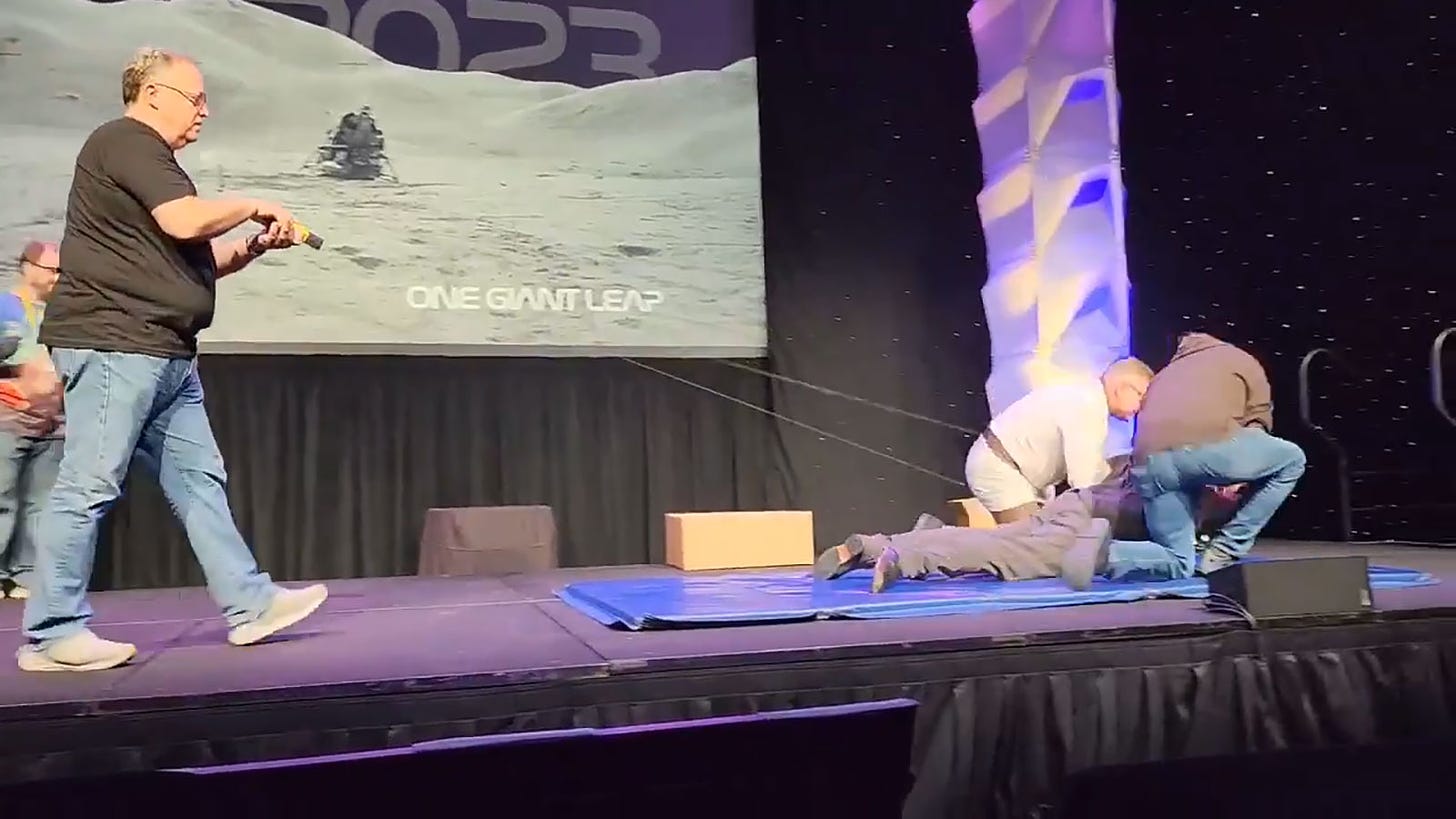
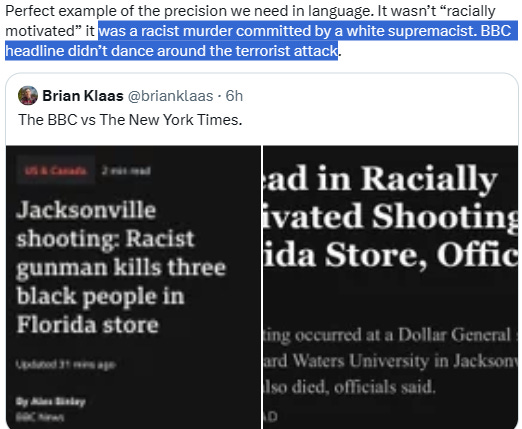

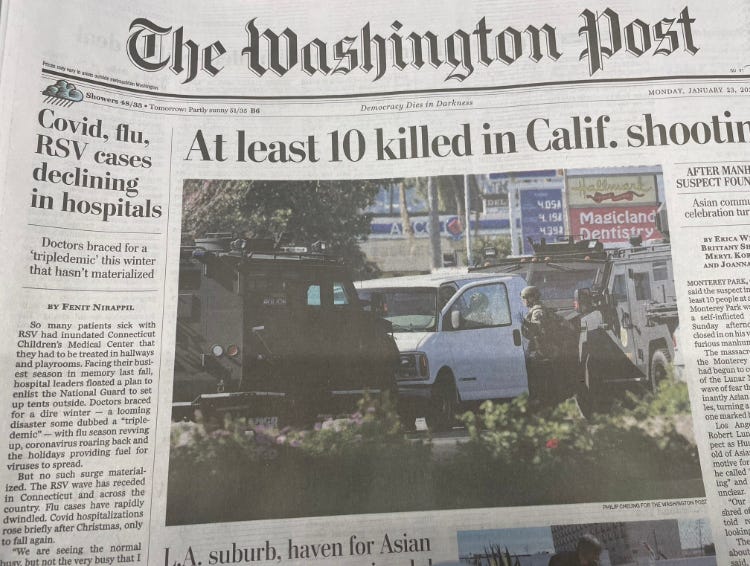
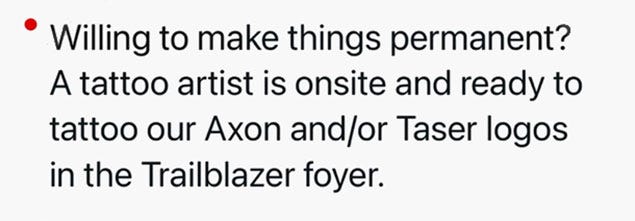
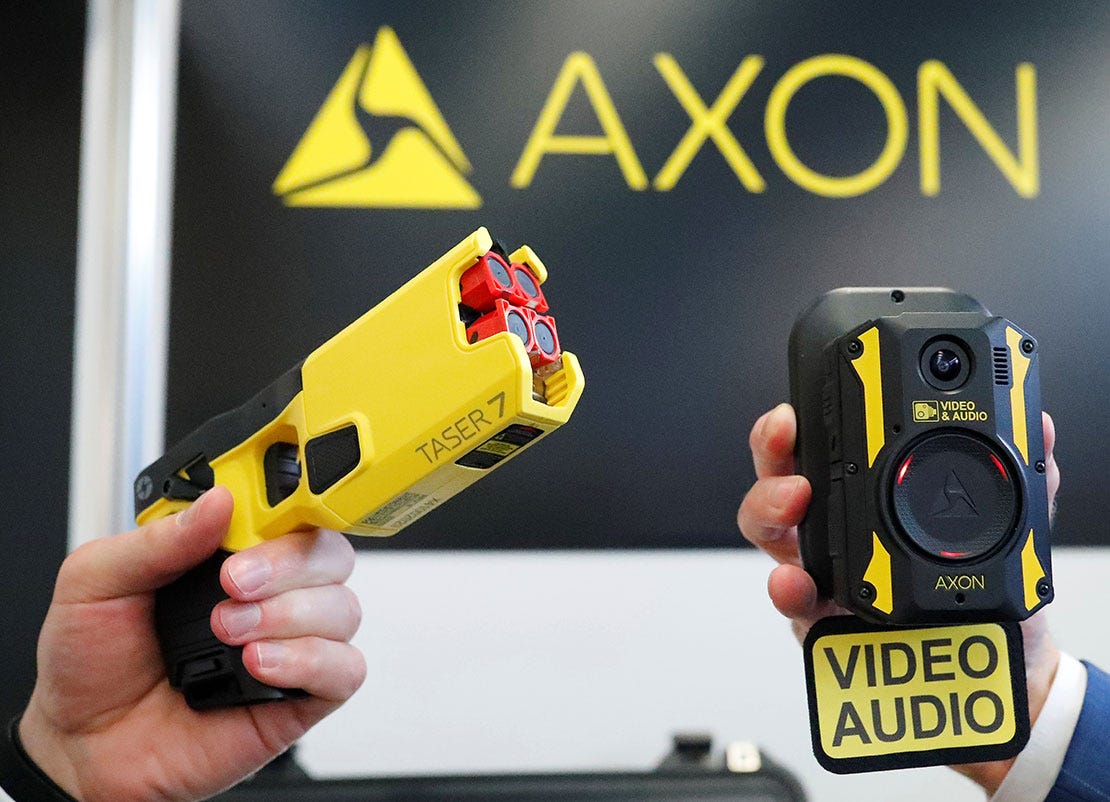
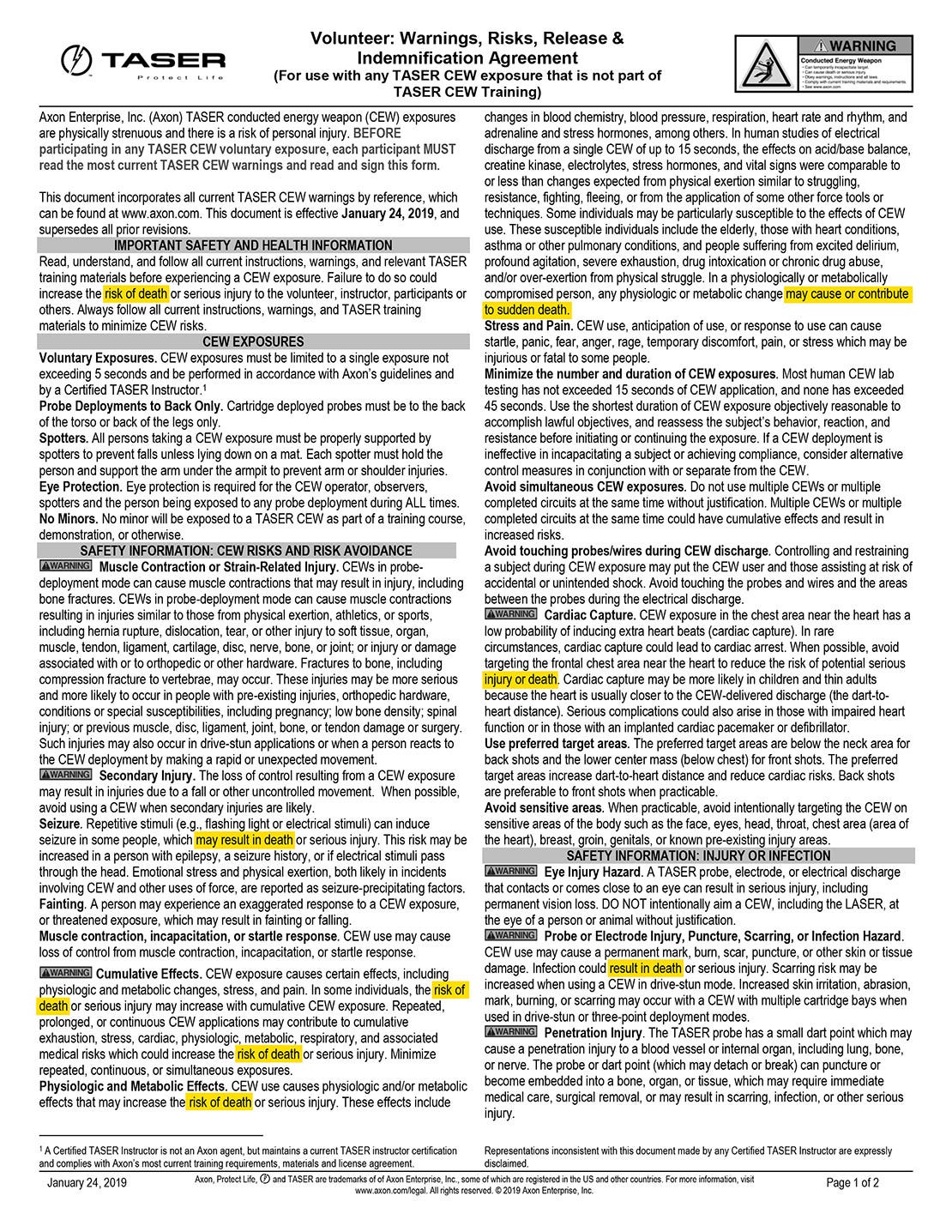

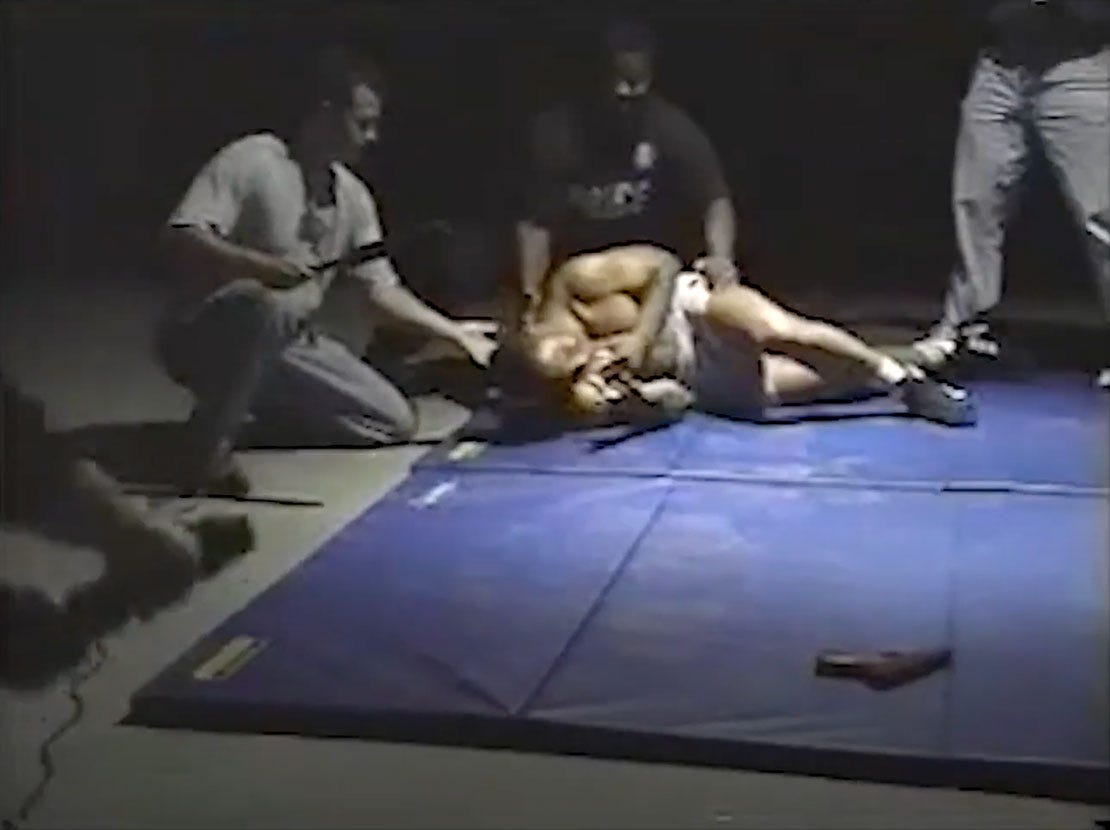
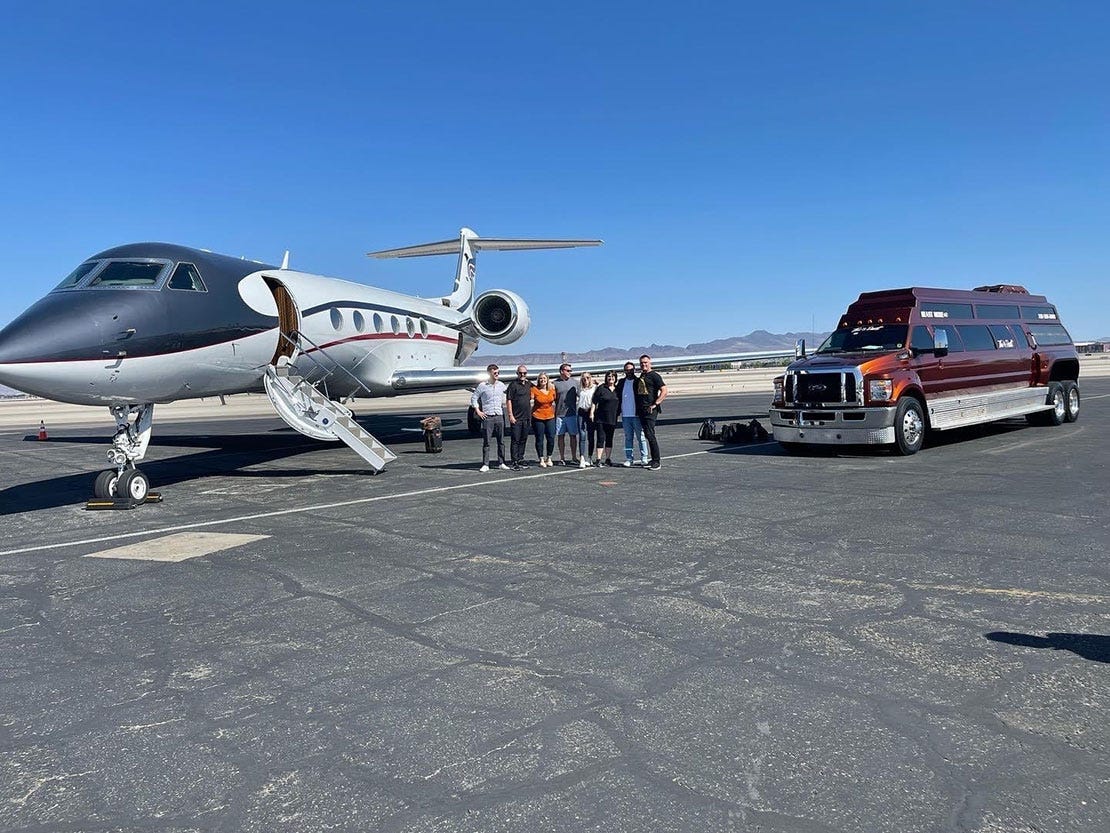

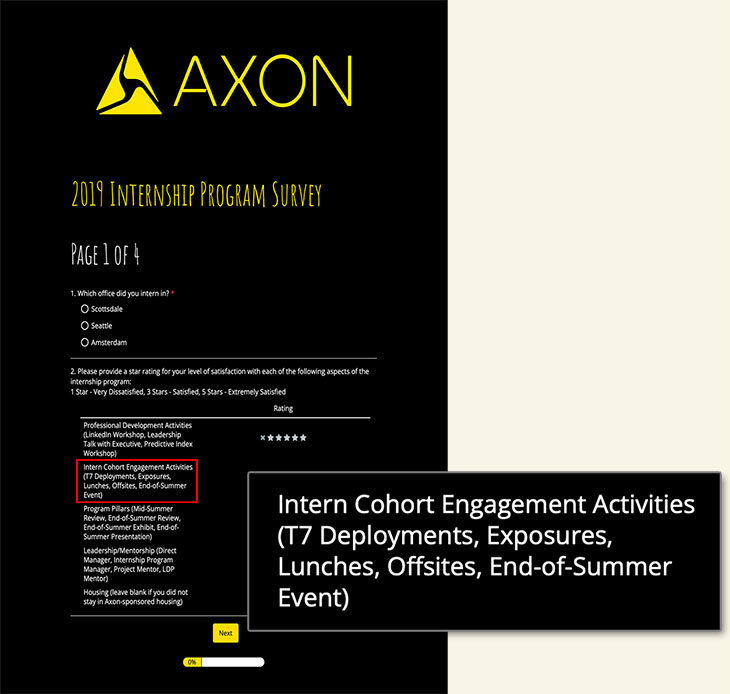
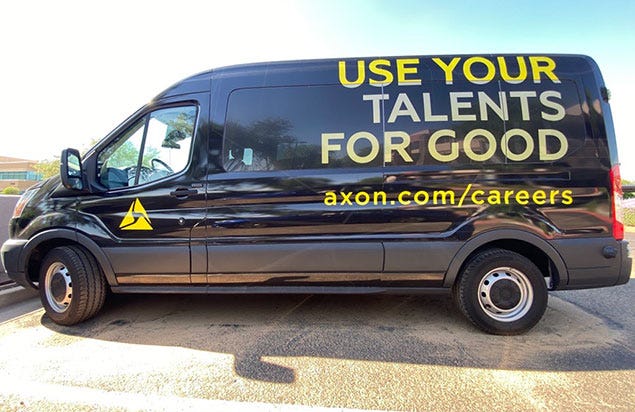
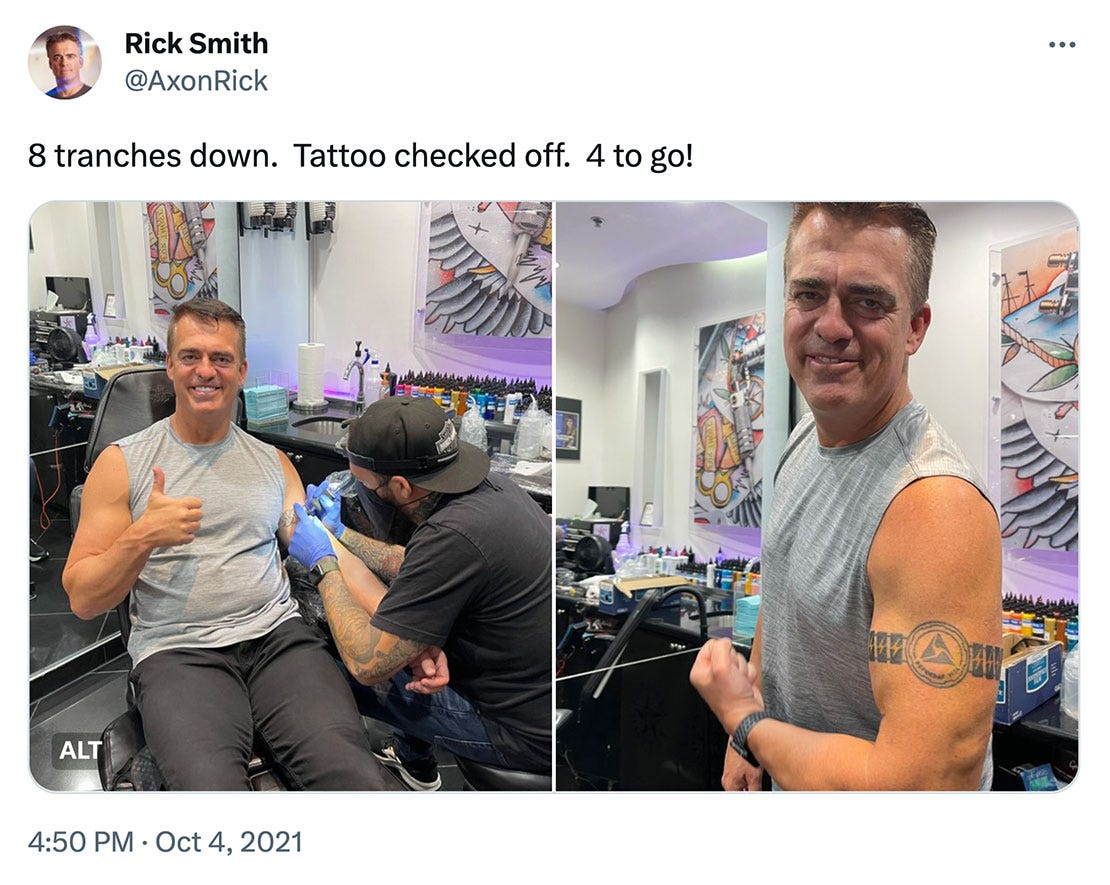
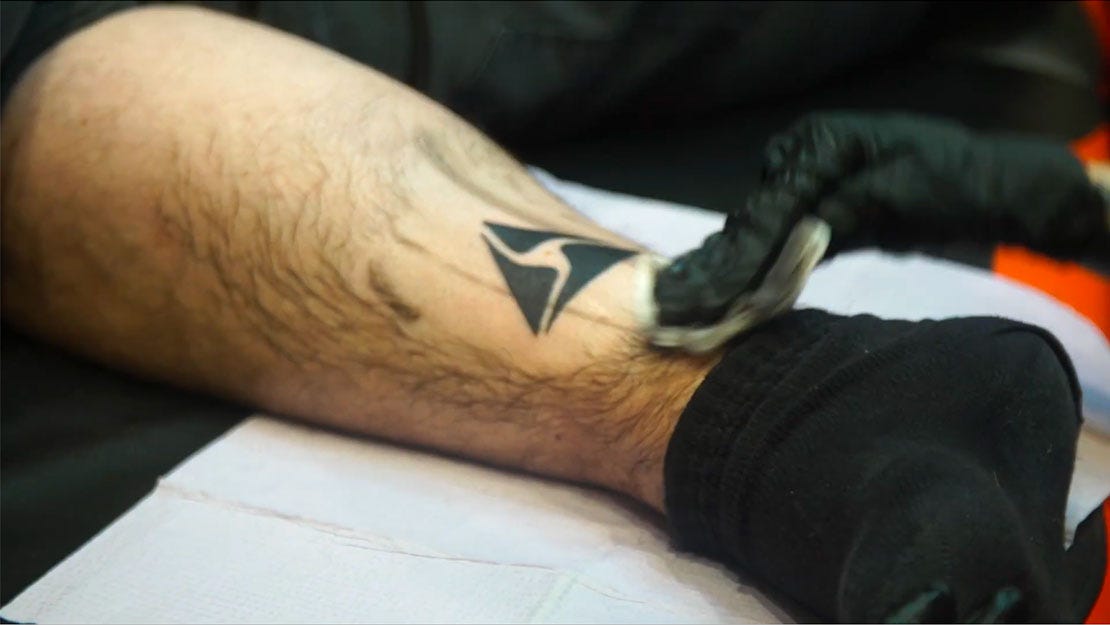
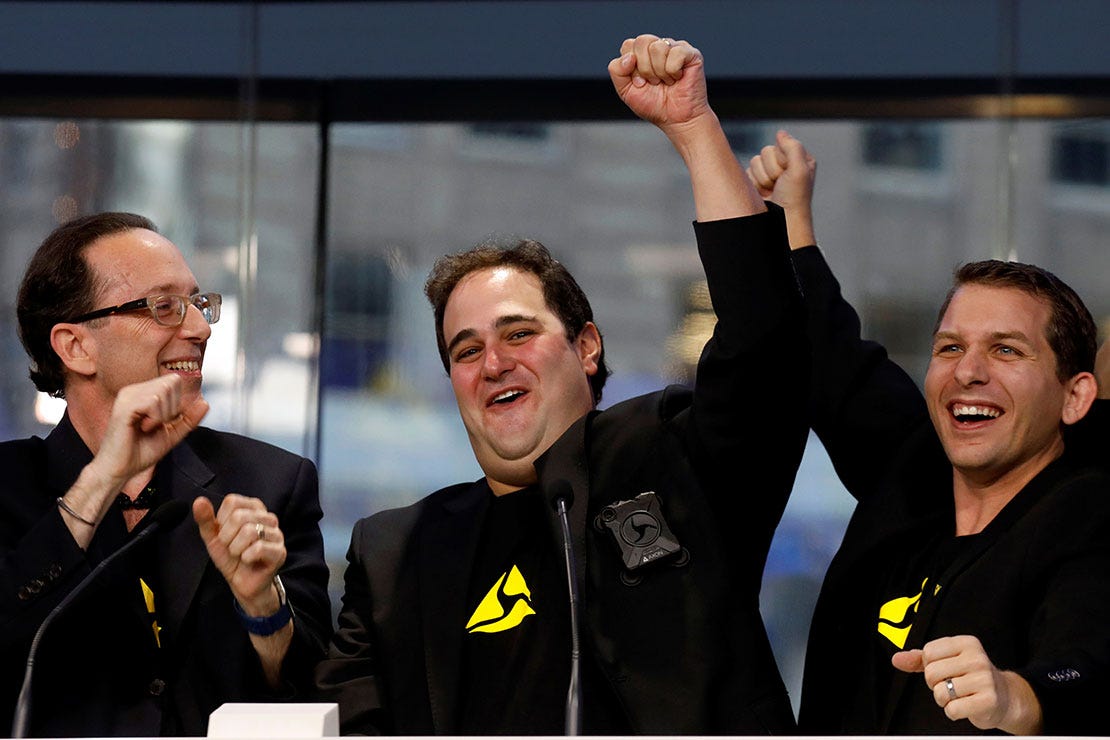
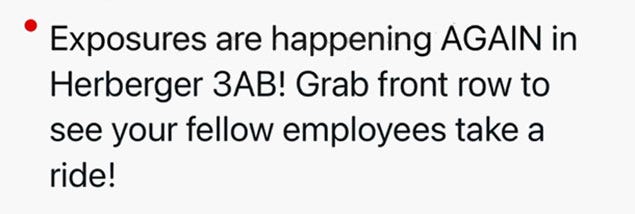
What are the solutions to this and how have they been working? Why are we only learning about this now?